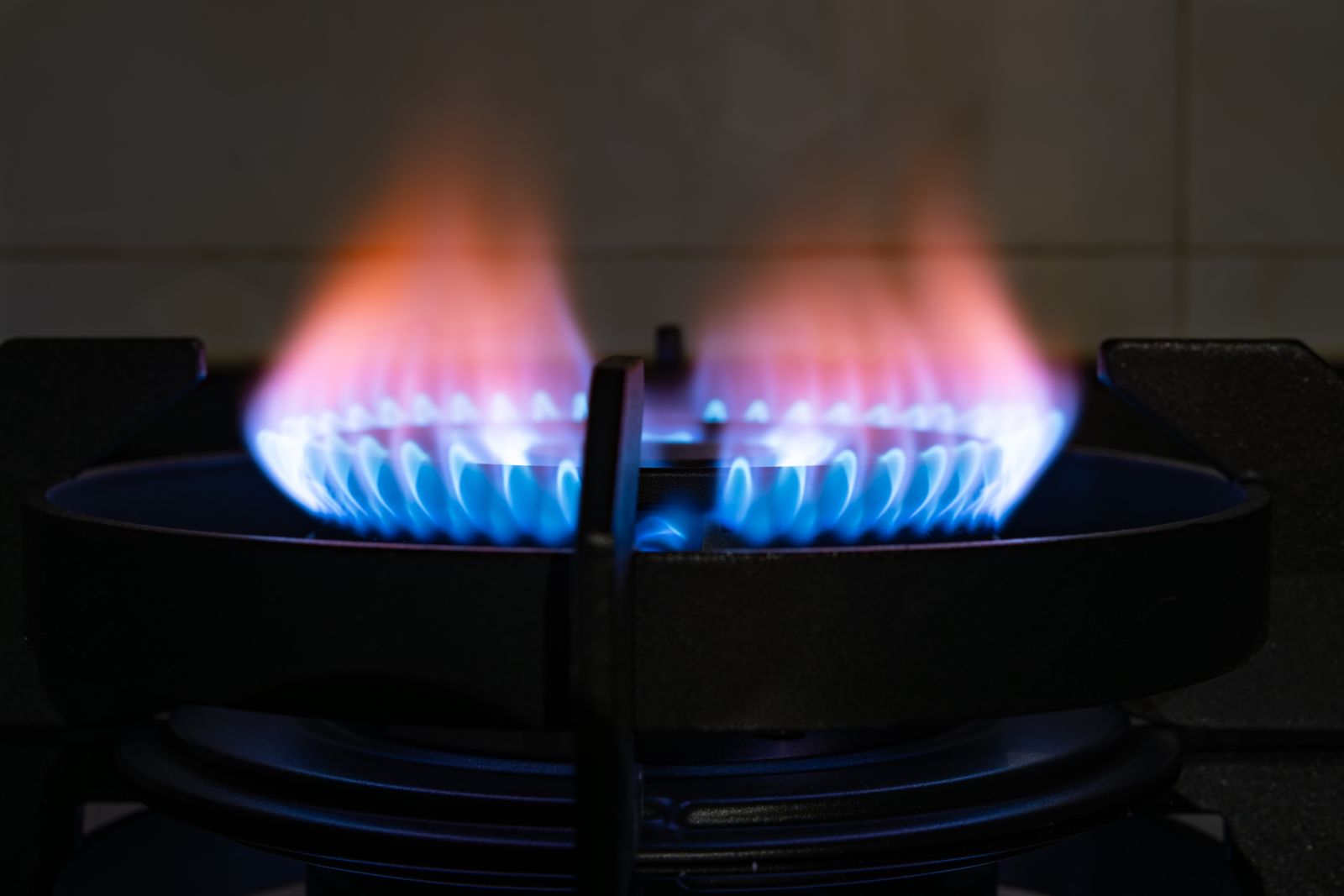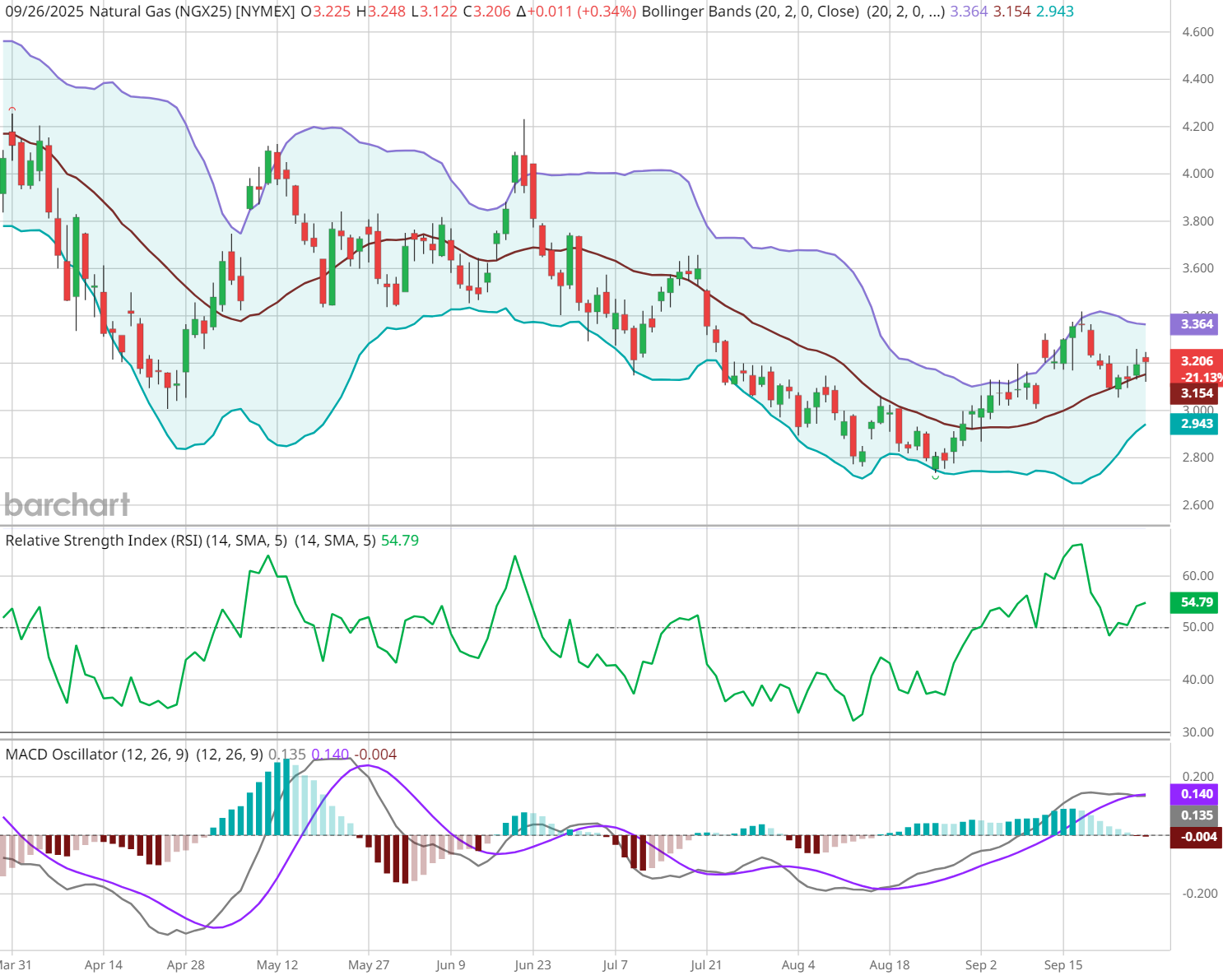
In a recent Market on Close livestream, John Rowland, CMT, tackled a question on natural gas into year-end — and his breakdown is one traders won’t want to miss.
Right now, natural gas (NGX25) is stuck in a sideways range near $3.20. But John sees the potential for major movement in either direction as we move deeper into winter.
Key Price Levels
- Upside targets: $4.50–$5.00 as base case, with a possible spike toward $6 if catalysts hit
- Downside floor: ~$2.85 as near-term support
- Current range: ~$3.20 (the “shoulder season” lull between summer and winter demand)

Catalysts That Could Move NatGas
Bullish drivers:
- Colder-than-expected winter weather in the U.S.
- Escalation of sanctions against Russia
- Energy supply disruptions in Europe
- Rising demand from data centers & electricity generation (45% of U.S. power still comes from natgas)
Bearish drivers:
- Warmer winter, reduced heating demand
- Stable LNG exports and no geopolitical shocks
- Oversupply in U.S. production
Trading NatGas: Futures & ETFs
For traders who want exposure, John flagged the ProShares Ultra Bloomberg Natural Gas ETF (BOIL), a 2x leveraged fund, as a short-term vehicle:
“I would play BOIL on a short-term momentum basis. Not as an investment vehicle.”
That’s because leverage + daily resets make products like BOIL and its inverse counterpart, the ProShares UltraShort Bloomberg Natural Gas ETF (KOLD), better for tactical trades as opposed to long-term holds.
Want more diversified exposure? Use Barchart’s ETF Finder for Energy to screen for ETFs focused on natural gas and energy equities.
And don’t forget to track pricing and contracts on Barchart’s Energies Futures page.
The Bottom Line
Natural gas is calm now — but John’s roadmap shows how quickly it could break out. Traders should:
- Map out the $2.85 downside vs. $4.50–$6 upside range
- Watch weather and geopolitics for catalysts
- Use futures, ETFs, and leveraged products tactically
Watch the clip from Market on Close:
- Stream the full episode and turn on notifications for the next live show.
- Explore Natural Gas prices & ETFs on Barchart.







